Ponytail palm care is incredibly simple. This is truly a set it and forget it indoor plant or small tree. Plant hobbyists will have no trouble maintaining the bottle palm. It is a perfect gift for the beginner plant parent.
Find a good placement, give it a good well draining soil and leave it alone. Much like the ZZ plant, Snake plants and Pothos plants, you will have no trouble growing the Elephant foot plant.
How do you Take Care Of a Ponytail Palm?
Just DON’T over water it. This plant, like all succulents, will get root rot in continually heavy wet soil. It thrives in less fertile soils that drain really well.
Our complete ponytail palm care guide will walk you through all the details of caring for the ponytail palm. Find it at the bottom of this post. It is easy to print off and save for later. 🙂
Although the ponytail palm is named for palms. It is NOT a palm. But a rather distant relative. Beaucarnea recurvata is actually a species of asparagaceae within the lily plant family.
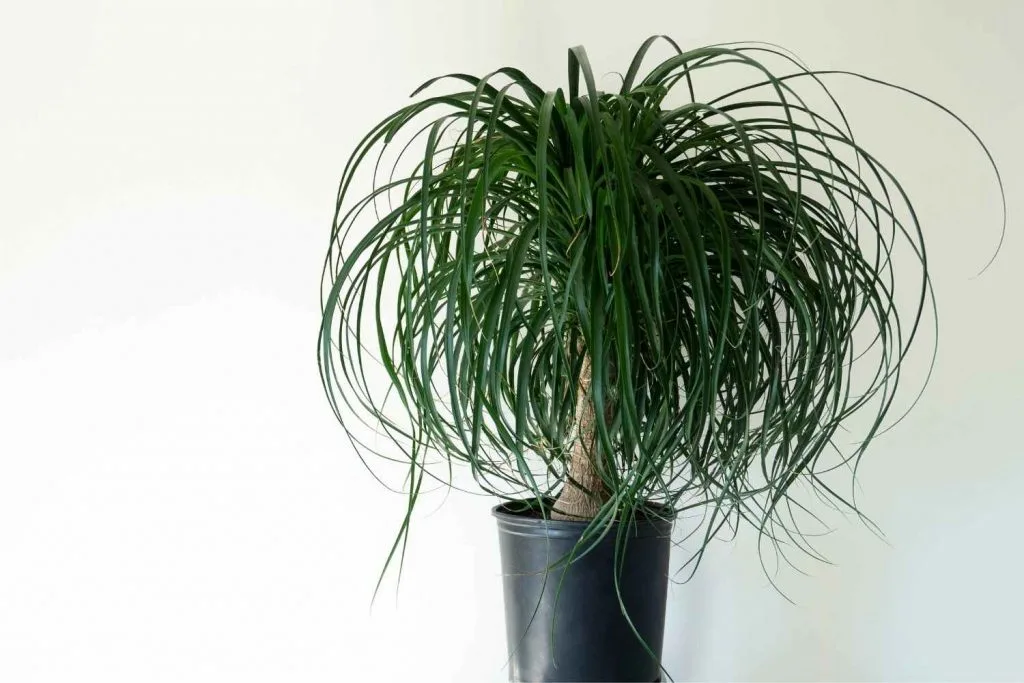
Beaucarnea recurvata has top lofty growth. Long narrow, leathery leaves grow in a fall from tufts at the top of a long bare trunk.
The trunk has smooth grey brown bark and is slender compared to the wild ponytail foliage. The bottom of the trunk expands into bulbous water reservoir for the plant.
The visual combination makes an unusual statement in your home or landscape.
Indoors, this indoor small tree will grow very slowly, to about 6 feet tall.
The whimsical growth looks like it belongs in a Dr. Suess Storybook landscape. In my opinion. 🙂 At the same time, this unusual plant is rather elegant and always eye catching.
The Ponytail palms outlandish appearance makes me feel good just to look at it. 🙂 However, it has other benefits as an indoor plant.
NON-Toxic Plant:
The Ponytail palm is NON toxic to dogs, cats and horses. Children are also safe with the ponytail. Which is great. The long flowing leaves entice cats and kids, especially, to give them a chew.
AND the Ponytail palm is an air purifier. Win, Win WIN with the bottle palm. You really need to grow one of these durable plants.
Plants are very beneficial to people emotionally and as an environmental addition to your home.
Read more about why houseplants are beneficial to people here .
The Contented Plant
SHOP PONYTAIL PALMS ON ETSY
They are available in many plant shops in various sizes. For online shopping and shipping we recommend Etsy.
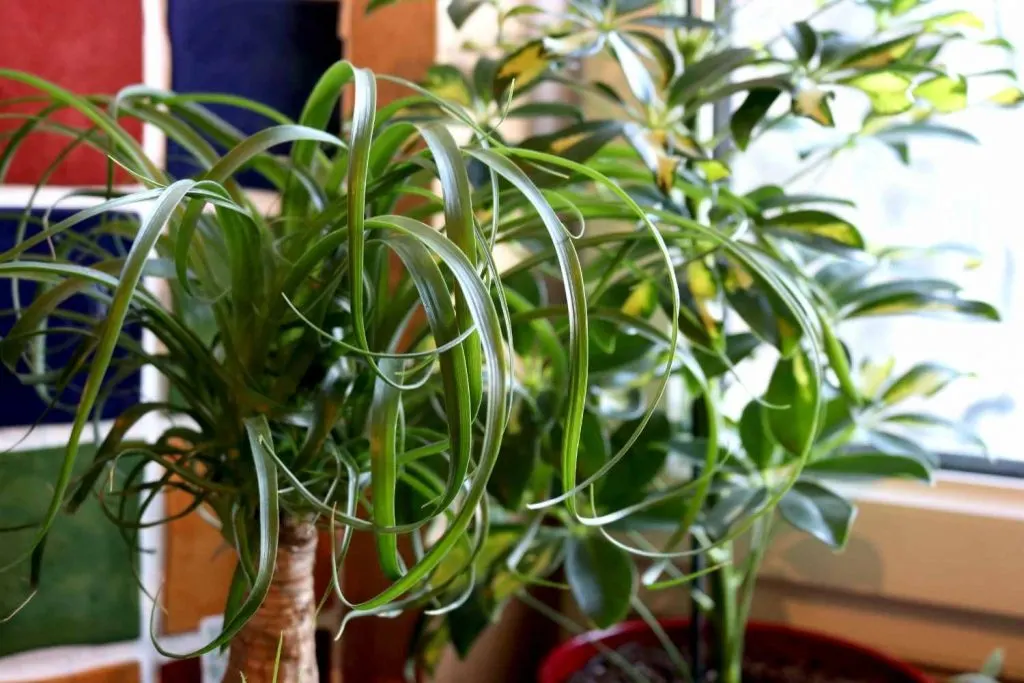
Growing Ponytail Palm Outdoors;
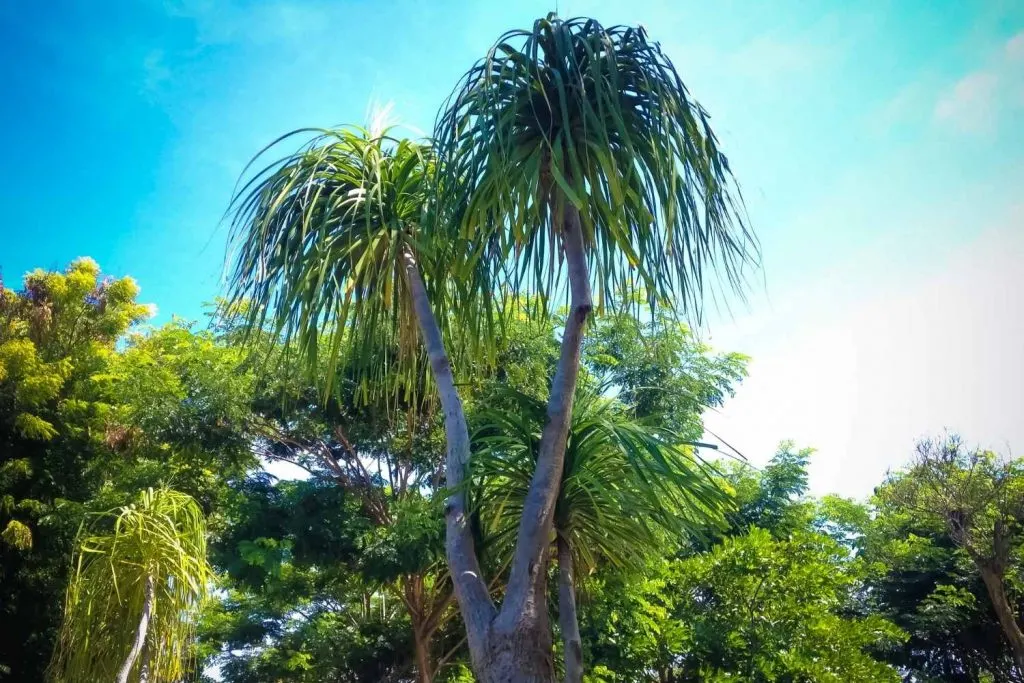
The Ponytail palm is a succulent. It is native to the hot dry, bright sunny environment found in Eastern Mexico.
Ponytail Palm tree grows well outdoors year around in climate zones 9 to 11. This is a good candidate for either a patio container plant or landscape tree in those places.
This shallow rooted tree normally grows to about 15 feet tall outdoors. However, it has grown up to 30 feet tall in optimal conditions.
At maturity, Beaucarnea recurvata will produce small white flowers seasonally. You may not notice them. The Elephant plant is grown for its unusual trunk and the spray of leaves coming from the top.
If you live in a dry sunny climate where the temperatures rarely dip below freezing Beaucarnea recurvata will thrive for you outdoors year round.
The ponytail will survive down to a rare plunge to 23 degrees f. But the plant will suffer severe damage. We don’t recommend temperatures that low.
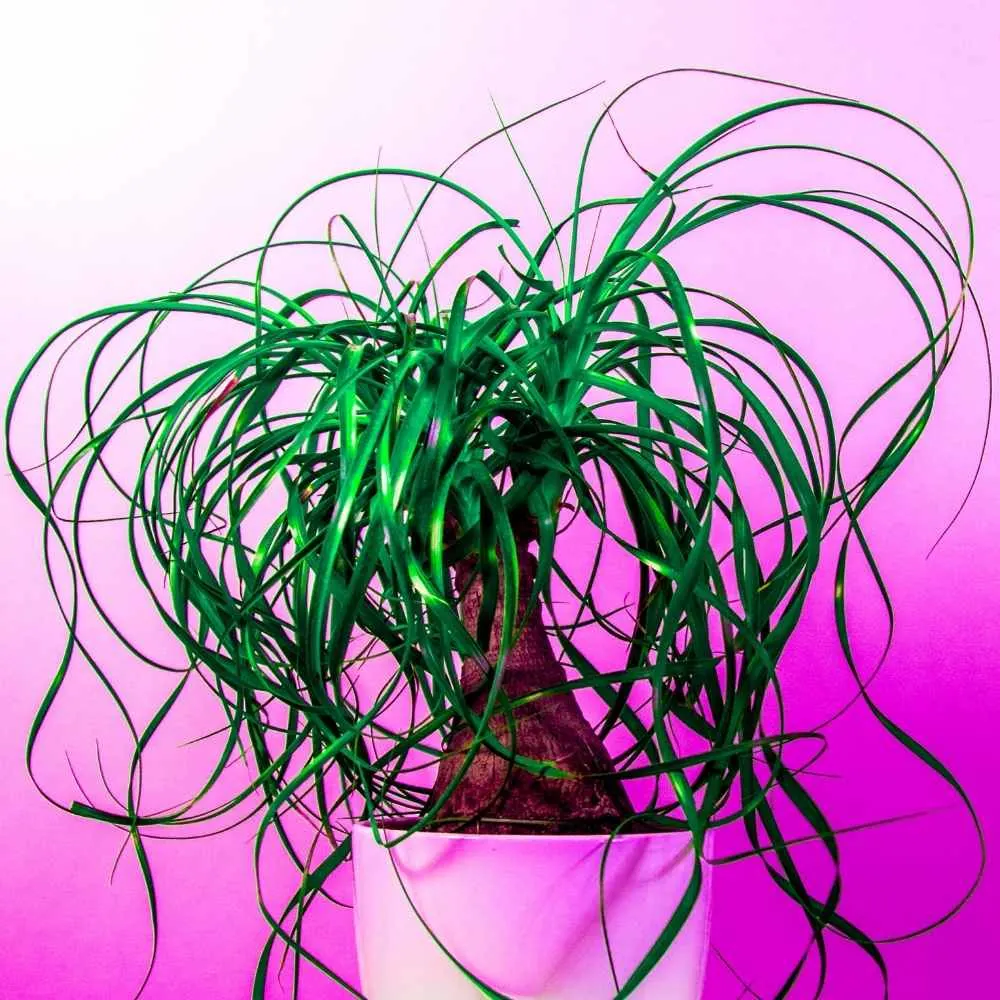
PonyTail Palm Care guide
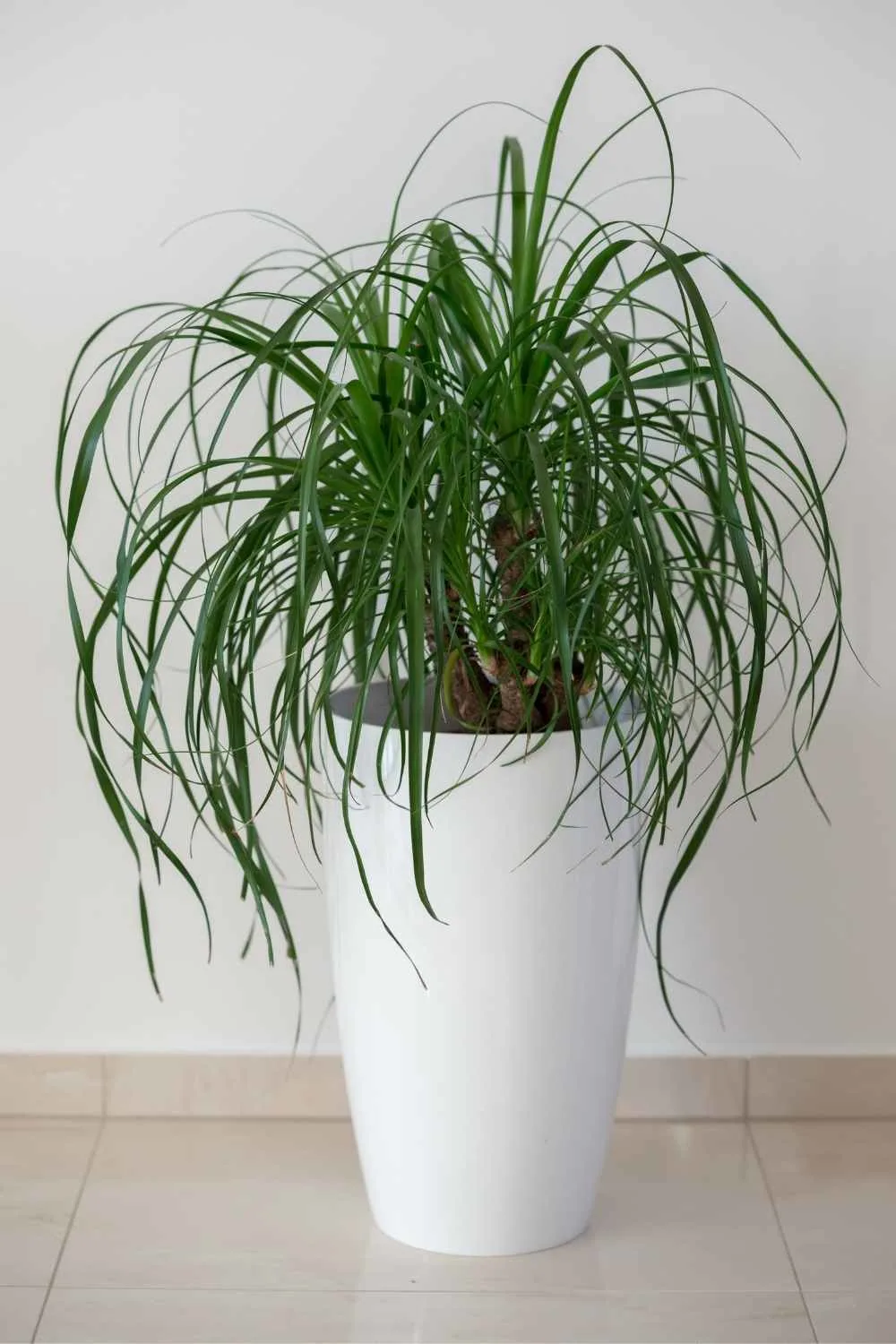
The PonyTail Palm
This Care Guide will teach you how to keep the elephant Foot Plant happy all through the year.
Tools
- Plant Pot (ceramic, plastic, or terra cotta)
- Potting medium
Instructions
Soil Preference:
- PontTail Palms prefer well draining substrates. The roots will rot quickly if they sit in moist soil.
- Use a succulent soil mix for the pony tail palm. OR
- Make a mix of 1 part potting mix, 1 part perlite and 1 part orchid bark or sand will keep the roots areated.
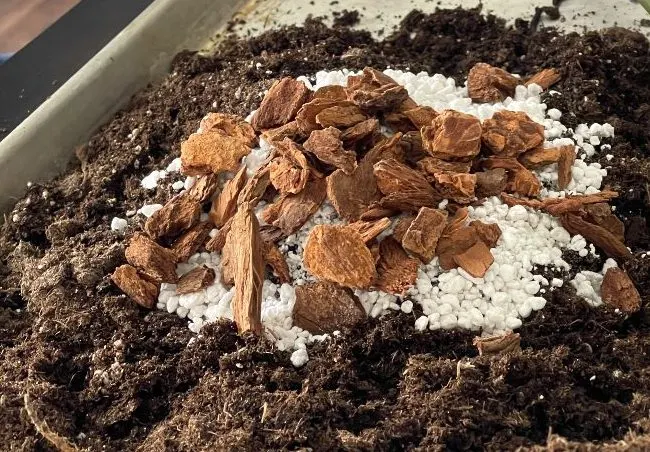
- Make sure your pot has drainage at the bottom.
Pot Size and Type:
- The Ponytail palm can grow in many different kinds of pots. Terra Cotta, concrete, ceramic and plastic are all great materials for this plant. Unglazed pots will help wick moisture away from the roots.
- Repot every second year or when roots come out the drainage holes on the pot bottom To the next pot size up. Don't jump to a huge pot from a small one. Just go to the next size up pot.
- NOTE: Pot size determines growth to a large extent. This plant will grow well in a small pot. The larger the pot the larger the ponytail palm tree will get.
Lighting: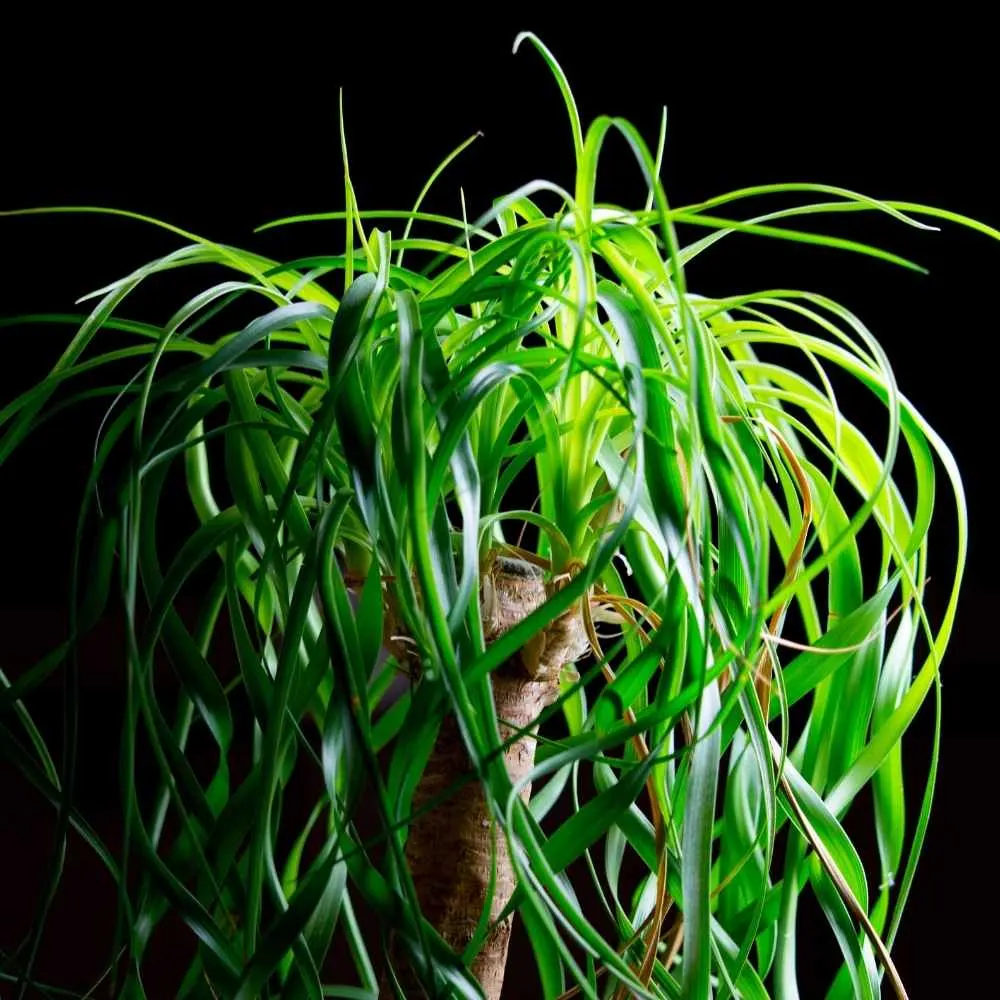
- This plant loves the light. It will tolerate Strong direct light all day.
- However, If you are transistioning the bottle palm from less intense indoor light to direct strong outdoor light the leaves may burn. Get the palm used to intense light by setting it into strong light gradually until the leaves can tolerate it. Remove it to bright shade unitl the leaves get used to the direct light.
- Strong direct sunlight from west or south facing windows, or on a patio should not bother the ponytail palm.
- However, the bottle palm also tolerates lower light conditions well. If you can give it moderate lighting in a large north facing window it should thrive. But the growth will slow.
- You can also supplement low lighting with artificial grow lights.
Watering: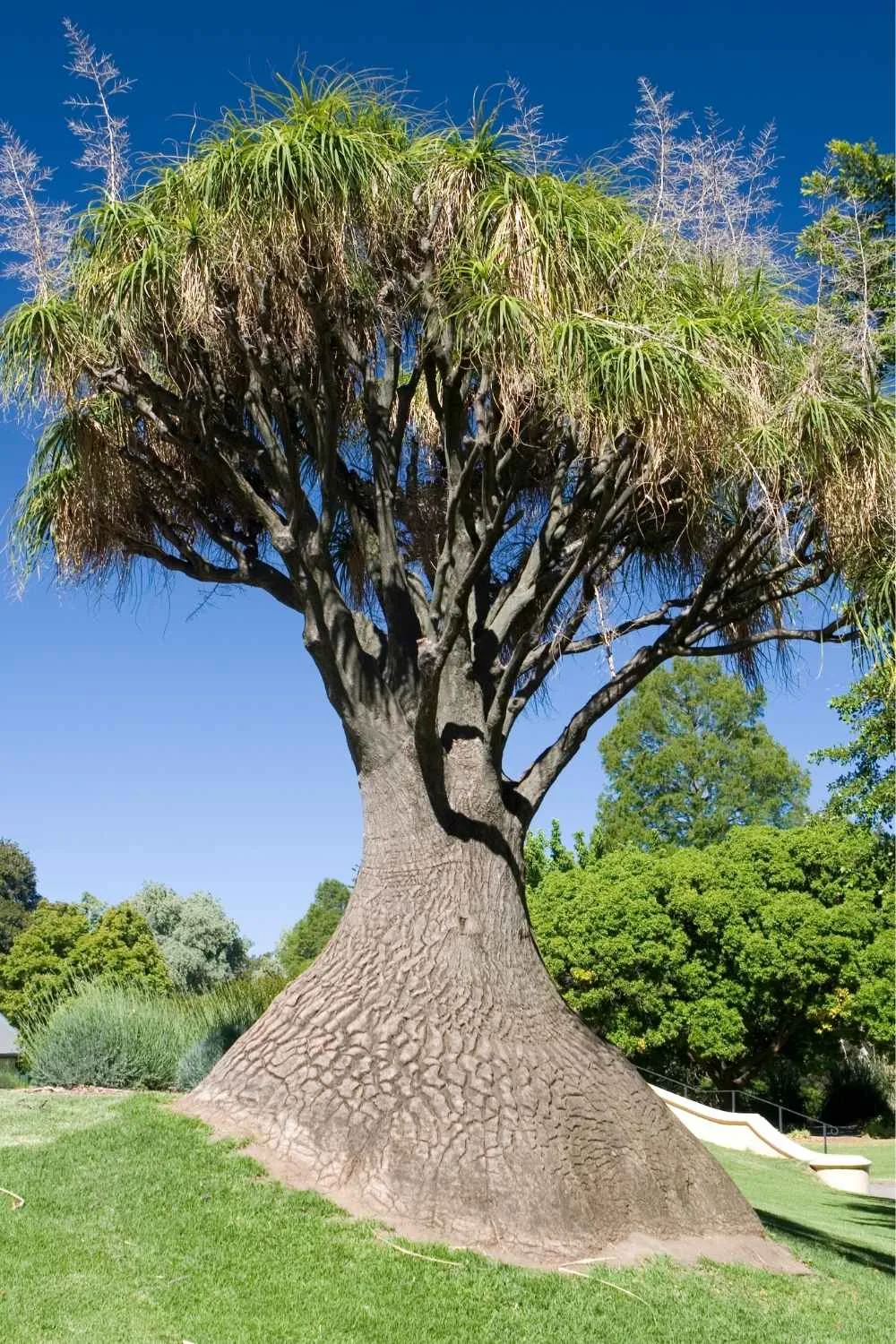
- Water your bottle palm when the soil is dry.. These plants are like camels. The large trunk is designed to hold water. This makes them drought resistant. The trunk retains water. The plant lives on it for quite a while.
- Outdoor the Elephant plant can survive in very dry climates. That is what it is best suited for.
- Indoors Water about once a month when the soil is dry. Otherwise leave it alone.
- Soak the ponytail thoroughly and then drain out any excess water in the drainage plate. Now leave it alone.
- Watering is best done on a regular schedule so the plant is not over or under watered. Both can cause stress on the plant.
- Never let this plant get wet feet. Overwatering can cause root rot and attract fungus gnats to your plant.
- Underwatering causes the leaves to turn brown.
How to Fertilize:
- Apply a good quality slow release fertilizer (linked in materials) annually.
- Over fertilizing can cause the leaves to turn brown.
Temperature:
- The ponytail palm will tolerate a large range of temperatures. However it is happiest above 55 degrees F to 80 degrees F.
- In winter patio plants can tolerate constant temperatures in the 50 degree range but do not let them freeze.
- Indoors room temperature is fine for these plants. You can remove them to a cooler room in the house for the dormant months.
Leaf Care:
- Washing the ponytail palm leaves helps keep the plant stomatas (pores) open so they can respire well.
- clean leaves are attractive.
- Washing and inspecting the leaves on a monthly basis also helps you discover plant problems that may need addressing.
- Pests are best found with close leaf inspection done at washing time.
- you can use our homemade neem oil spray found in all our pest control guides as a wash on plant leaves to deter pests.
Pests:
- This plant is a hardy resilient plant. However all plants can get attacked by pests.
- Stress by longterm overwatering, poor light, extreme temperatures and soil conditions are contributors to plant stress..
- Spider mites, mealy bugs, scale, thrips and whitefly are the most common houseplant pests you will see.
- Read our post on How to get rid of aphids and other pests with our homemade pesticide soap recipe or neems oil.
- To minimize the possibility of pests be sure to check all nursery plants before bringing them home.
- Quarantine all new plants until you are sure no pests live in them.
How to Propagate:
- The mature bottle palm will grow offshoots from the trunk called pups.
- They can be removed from the plant and planted in another pot to make a new plant.
- You can also propagate the ponytail palm by seed if you have years to wait. The process is the same as you will find in our video series and posts on planting and growing Monstera from seed.
Notes
The Ponytail palm Plant is a rewarding and perfect plant for a beginner. This plant will grow beautifully with just a little bit of care.
If you have questions on your Elephant foot plant you don’t see answered here, just ask. We love to plant chat!
Related Content:
Follow Us:
Find us on YouTube, Instagram , Pinterest and TikTok! We love to Plant chat. We also comment, like and occasionally share your content to our daily stories. We’d love to see your plants. Share your joy in your houseplants. Happy Planting!
Recent Posts:
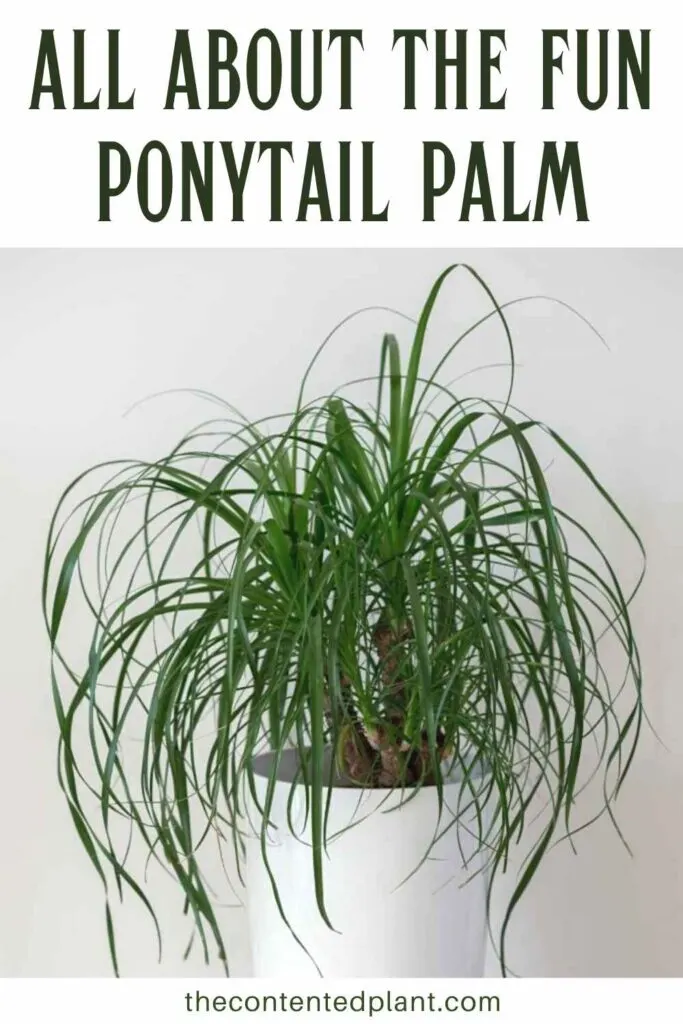


John
Monday 8th of May 2023
I have a mature plant that is now developing pups. How big should the pups be before I separate them. ? Do I simply cut them off with a knife?
Diane Williams
Friday 12th of May 2023
Hi John, You should wait until the pups are about one-third the size of the parent plant before separating them.
To separate the pups, you can use a clean, sharp knife or pruning shears to carefully cut them away from the parent plant. Be sure to cut as close to the base of the pup as possible without damaging the parent plant.
Once the pup is separated, you can either pot it up in a small container with fresh soil or plant it directly in the ground, depending on your preference. Keep the soil around the pup moist while it establishes new roots, but be careful not to overwater and cause the soil to become waterlogged.
Choosing the Best Succulent Pots - The Contented Plant
Tuesday 22nd of November 2022
[…] aloe plant and many other succulents and cacti have thick leaves that store water. The pony tail palm uses its large ‘foot’ at the base of the stem as a water reservoir. ZZ plants and Snake plants […]
Yucca Cane Plant Profile and Care Guide - The Contented Plant
Monday 14th of November 2022
[…] PonyTail Palm Profile and Care Guide […]
Watering Succulents-Tips for Success - The Contented Plant
Friday 7th of January 2022
[…] built in water tanks in their rhizomes, roots and leaves. Some examples of this are the ZZ plant, Ponytail Palm, snake plants, hens and chicks and […]